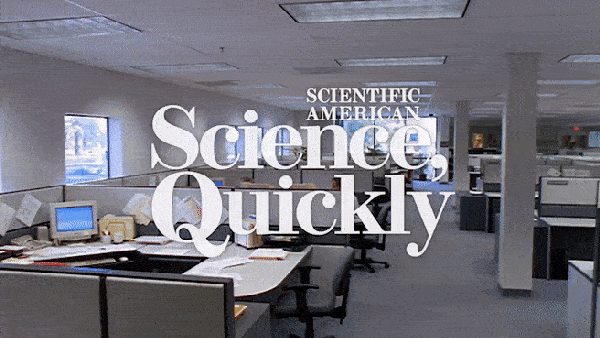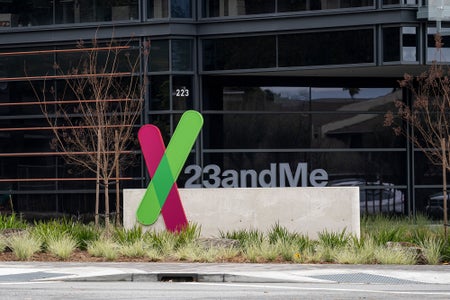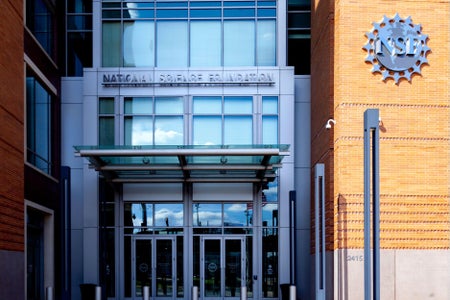Products
By Team
Sales
Multithread effectively and personalize outreach to convert deals faster
Social Media Marketing
Elevate social presence and drive business growth from social media
RevOps
Identify and prioritize high-intent leads, and improve sales effectiveness
Events & Field Marketing
Find and connect with ICP attendees, and improve event outcomes
Resources

Scientific American
What Does Scientific American Do?
Scientific American is the oldest continuously published magazine in the United States, founded in 1845. It provides authoritative, accessible, and engaging content on the latest developments in science, technology, health, and policy. Known for its in-depth features, expert analysis, and contributions from Nobel laureates, Scientific American aims to inform the public, inspire curiosity, and foster a scientifically literate society. Its content spans a print magazine, a dynamic website with breaking news and blogs, and various digital platforms.
Where Is Scientific American's Headquarters?




HQ Function
The headquarters serves as the central hub for editorial operations, content creation and curation, digital media management, publishing, and administrative functions for Scientific American magazine and its online platforms.
Notable Features:
Located in 1 New York Plaza, a prominent skyscraper in Lower Manhattan, offering modern office facilities with views of the New York Harbor. The building features contemporary architecture and provides access to advanced technological infrastructure.
Work Culture:
The work culture at Scientific American is characterized by intellectual curiosity, a commitment to scientific accuracy and journalistic integrity, collaboration, and a fast-paced environment driven by news cycles and publication deadlines. It fosters critical thinking and a passion for communicating science effectively.
HQ Significance:
The New York headquarters is significant as the operational core of one of the world's most respected and long-standing science publications. From here, Scientific American influences global science communication, shapes public understanding of complex topics, and upholds a legacy of trusted science journalism.
Values Reflected in HQ: The headquarters' operations reflect Scientific American's core values of scientific rigor, journalistic excellence, innovation in communication, and a commitment to making science accessible and understandable to a broad audience.
Location:
Scientific American has a significant global presence primarily through its international distribution of print and digital content, a worldwide readership, and numerous international licensed editions in various languages. While its core editorial and operational hub is in New York, its global reach in terms of sales, marketing, and broader operational support is facilitated by its parent company, Springer Nature, which maintains offices in major cities around the world. Scientific American also features contributions from scientists and journalists globally.
Street Address:
1 New York Plaza, Suite 4500
City:
New York
State/Province:
NY
Country:
USA
Where Else Does Scientific American Operate Around the World?
No additional office locations available.
Buying Intent Signals for Scientific American
Highperformr Signals uncover buying intent and give you clear insights to target the right accounts at the right time — helping your sales, marketing, and GTM teams close more deals, faster.
Who's Leading Scientific American? Meet the Executive Team
As of April 2025, Scientific American' leadership includes:
Who's Investing in Scientific American?
Scientific American has been backed by several prominent investors over the years, including:
What Leadership Changes Has Scientific American Seen Recently?
No major executive hires or departures specifically for Scientific American's core leadership (Editor-in-Chief, Publisher) have been widely publicized in the last 12 months. The current leadership team appears stable.
What Technology (Tech Stack) Is Used byScientific American?
Discover the tools Scientific American uses. Highperformr reveals the technologies powering your target accounts — helping your sales, marketing, and GTM teams prioritize smarter and close faster.

Scientific American Email Formats and Examples
Scientific American, being part of Springer Nature, likely follows professional email formatting conventions common in large publishing organizations. These often involve combinations of the employee's first name and last name. While exact patterns can vary, common structures are predictable.
[first_initial][lastname]@scientificamerican.com (e.g., jdoe@scientificamerican.com) or [firstname].[lastname]@scientificamerican.com (e.g. jane.doe@scientificamerican.com)
Format
lhelmuth@scientificamerican.com (example based on common pattern for Laura Helmuth)
Example
70%
Success rate
What's the Latest News About Scientific American?
Scientific American Press Room • May 10, 2024
Scientific American's 'Hidden Cost of Protein' Series Wins Society of Publication Designers Gold Medal
Scientific American announced that its investigative series, 'The Hidden Cost of Protein,' received a Gold Medal from the Society of Publication Designers (SPD). The series explored the environmental and health impacts of protein production and consumption....more
Scientific American Press Room • January 17, 2024
Scientific American and Kalinga Institute of Industrial Technology Announce Partnership to Advance Science Communication in India
Scientific American and the Kalinga Institute of Industrial Technology (KIIT) formed a strategic partnership aimed at enhancing science communication and engagement in India. The collaboration includes content sharing, joint events, and educational initiatives....more
Scientific American Press Room • November 2, 2023
Scientific American Announces Inaugural Climate Forward Fellowship Cohort
Scientific American introduced the first cohort of its Climate Forward Fellowship, a program designed to support and mentor early-career journalists from underrepresented backgrounds who are focused on climate change reporting....more
Highperformr's free tools for company research
Explore Employees by Region or Country
See where a company’s workforce is located, by country or region.
View Funding Details
View past and recent funding rounds with amounts and investors.
Understand Revenue Insights
Understand company revenue estimates and financial scale.
Track Active Job Openings
Track active roles and hiring trends to spot growth signals.
Review Product and Offerings
Discover what a company offers—products, platforms, and solutions.
Get SIC or NAICS Codes
Get the company’s official SIC and NAICS classifications.
Analyze Website Traffic Trends
Analyze visitor volume, engagement, and top traffic sources.
Discover Social Profiles and Engagement
Explore LinkedIn, Twitter, and other active social profiles.
Identify Top Competitors
Identify top competitors based on similar business traits.
Research and Discover Companies with Highperformr — Smarter, Faster
Explore companies in depth — from the tech they use to recent funding, hiring trends, and buyer signals — all in one powerful view.
Highperformr AI helps you surface the right accounts and enrich your CRM with verified company and contact insights, so your teams can prioritize and engage faster.
- Track intent signals to find buyers who are actively in-market
- Enrich contacts and companies instantly, no need to switch tools
- Automate workflows to stay ahead of every change
- Connect your CRM & tools for seamless data sync and activation
Thousands of companies, including Scientific American, are just a search away.



.png)
.png)



